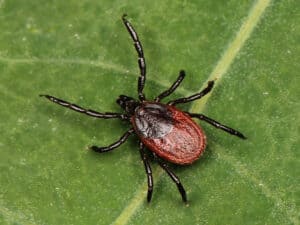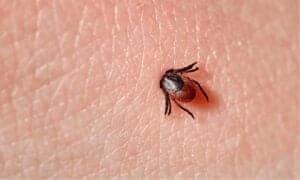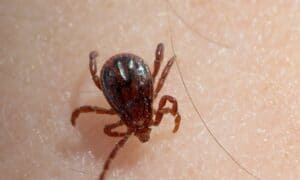6 Ticks in Florida
@media (min-width: 481px) {
.mobile-top-content {
display: none;
}
}
#mobileTopContentCTACarouselControls { overflow: hidden; text-overflow: ellipsis; white-space: nowrap; }
.mobile-top-content .more { color: #fff; }
.mobile-top-content a { color: #fff; text-decoration: underline; }
.mobile-top-content a:hover { color: #fff; text-decoration: underline; }
@media (max-width: 480px) {
.mobile-top-content {
background-color: #06a10b;
color: #fff;
text-align: center;
/*height: 60px;
padding-top:5px;*/
font-size:80%;
/* display: block; */
margin: 0px -30px;
}
}
Almost all ticks go through four stages during their lives, including six of the ticks in Florida. They start as eggs, hatch into larvae, turn into nymphs, and finally become adults before death. One of the reasons that ticks are an important vector of diseases in humans is that they usually change hosts between life stages.
When ticks are nymphs, they feed on rodents and other harbinger populations of animals that carry deadly diseases. These diseases are then transferred to humans and other animals when the tick reaches adulthood.
It takes a few hours for an attached tick to transmit diseases. Locating a tick that’s on you or your pets early is essential to disease prevention.
As any Floridian knows, ticks are a common nuisance within the state. What are six of the most common ticks in Florida that you may encounter? We’ll take a look at them now.
1. Lone Star Tick

iStock.com/epantha
Lone star ticks are the most common ticks that bite humans in the state of Florida. They’re also the easiest to identify because the females have a dot on their backs that almost looks like it was made with a whiteout pen. These ticks are hard to see with the naked eye because they’re tiny. It’s easy to pick them up if you walk through tall brush and grass.
Lone star ticks are vectors for southern tick-associated rash illness (STARI) and ehrlichiosis. These ticks are so widespread and annoying to the residents of Florida that scientific studies have been done in wooded areas to try and determine which pesticides work best.
2. Deer Tick
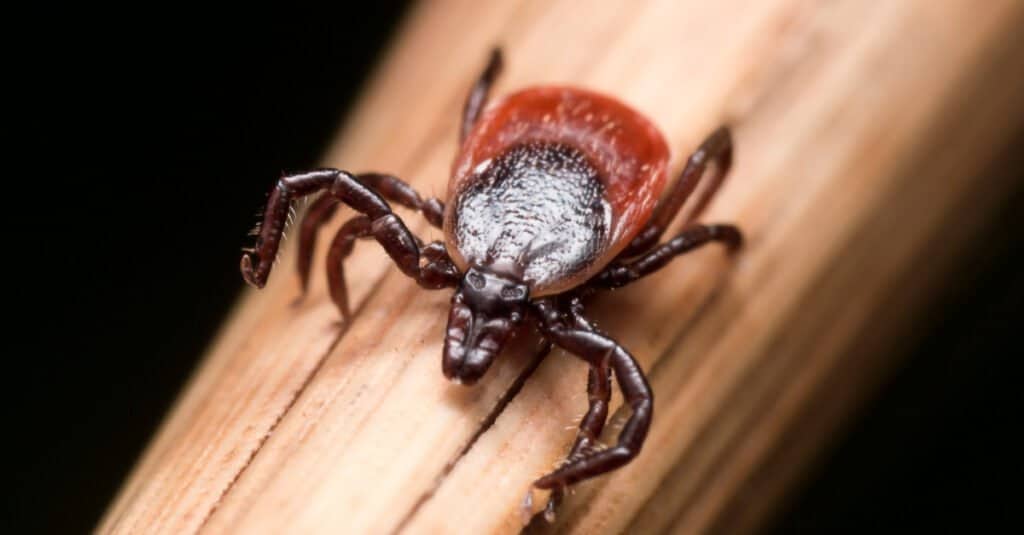
Steven Ellingson/Shutterstock.com
Deer ticks are such voracious eaters that they can engorge themselves until they’re six times their regular size. Two other names for them are black-legged ticks and bear ticks. They are usually about the size of a sesame seed, so they’re hard to spot.
These ticks are found in areas where forests meet open areas and anywhere that long grass has grown. Deer are not their only food source, and they’ll take advantage of any large mammal that makes themselves a convenient target.
Deer ticks are the main culprit in the spread of Lyme disease. They’re also known to pass along Human Granulocytic Anaplasmosis (HGA) and babesiosis.
3. Brown Dog Tick

iStock.com/Goldfinch4ever
As the name implies, this tick mainly feeds on canines. While other ticks have patterning that distinguishes them, brown dog ticks are solid brown to the naked eye. They technically have some patterning on them, but you won’t see that when you encounter one.
While most ticks live outside, these ticks do great indoors. They like to live in dog kennels which makes them especially hard to get rid of when an infestation has occurred.
When there are no mammals around to feed on, brown dog ticks can live up to 600 days without eating. These ticks are common all over the world, and they often plague animal shelters. They’re a common vector for Rocky Mountain spotted fever.
4. American Dog Tick
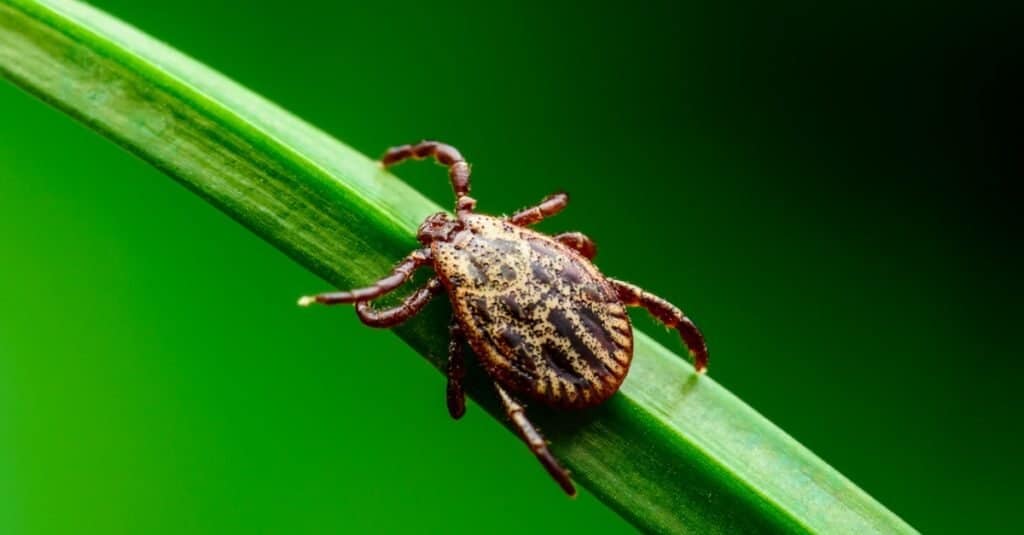
iStock.com/nechaev-kon
While these ticks are also found on dogs, they attach to other mammals readily, including humans. They are a known vector of Rocky Mountain spotted fever. They’re also the primary ticks found on feral pigs.
The American dog tick is often confused with the brown dog tick. However, brown dog ticks are mainly found indoors, while American dog ticks live outside. These two ticks look a lot alike, but where you find them is a good indicator of which pest you need to conquer.
Paralysis can occur in children and dogs if one of these ticks attaches itself near the base of the skull. This is because they secrete a toxin. The effects of this toxin go away within 24 hours of tick removal.
5. Gulf Coast Tick

iStock.com/cturtletrax
The Gulf Coast tick is often misidentified as the American dog tick because they look a lot alike. However, the gulf coast tick has a bigger mouth. Gulf Coast ticks attack humans but are most commonly found near the ears of large animals like cows.
These ticks are vectors for Rickettsia parkeri. They’re also apt to feed on deer and domesticated animals, so they aren’t only a concern to farmers.
6. African Tortoise Tick
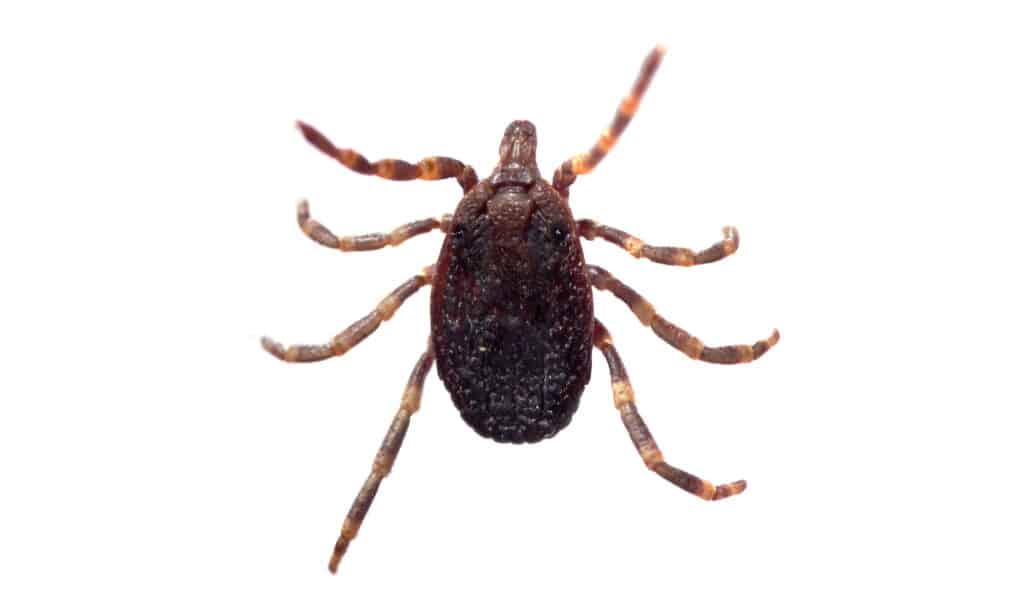
iStock.com/digitalg
This invasive tick came to Florida on imported reptiles and now acts as a vector of heartwater disease in cattle, deer, sheep, and goats. Studies of this tick in Florida show that the infestation is not recent nor is it contained to isolated populations.
African tortoise ticks are similar to other ticks, but they prefer tortoises and other reptiles. They will take advantage of any convenient mammal, however.
Bont Tick Concerns in Florida
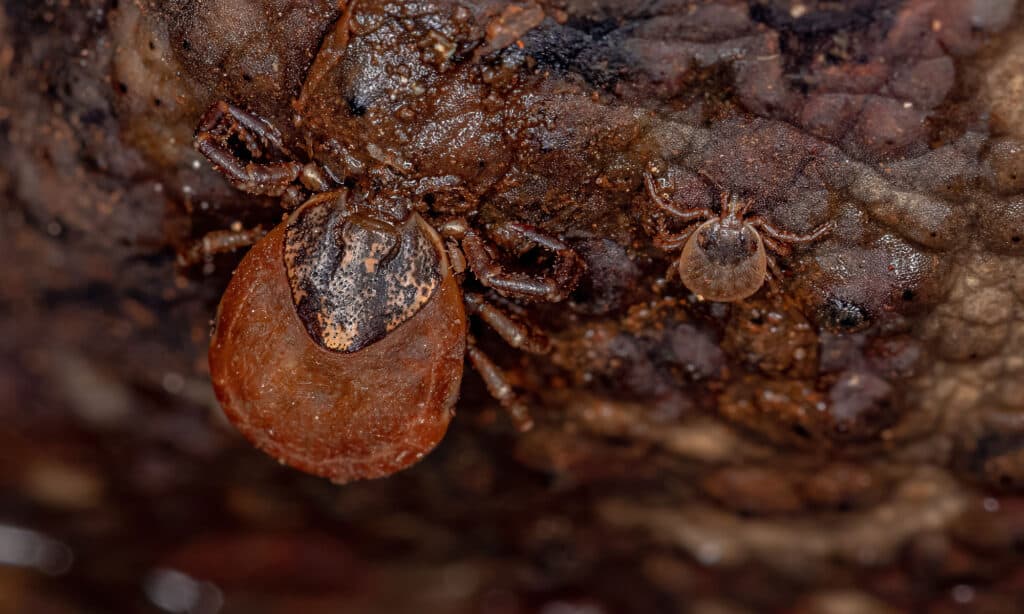
iStock.com/ViniSouza128
The bont tick is originally from Africa and is also known as the Senegalese tick. While it hasn’t yet been discovered in Florida, it does live in the Caribbean. There are fears that it will soon make its way to the United States due to its rapid spread throughout the Caribbean islands.
Cattle egrets are a common mode of transportation for these ticks in America. Bont tick nymphs feed primarily on these birds as well as mongooses. As adults, an attached female tick can become so engorged it’s the size of a nutmeg.
Bont ticks are highly patterned on their backs and have almost a golden sheen to them. Their legs are brown and tan, with the females being much duller than the males. The bont tick is a colorful and tropical tick that primarily munches down on cattle, though human bites have been documented.
This tick is a known vector for African tick-bite fever and other diseases, though few documented human cases have been recorded. It is one of the primary vectors of heartwater disease in cattle. It also makes hosts of goats, sheep, dogs, and camels.
More from A-Z Animals
.more-snake-card-image { max-height:140px !important; }
@media (min-width: 481px) {
.mobile-top-content {
display: none;
}
}
#mobileTopContentCTACarouselControls { overflow: hidden; text-overflow: ellipsis; white-space: nowrap; }
.mobile-top-content .more { color: #fff; }
.mobile-top-content a { color: #fff; text-decoration: underline; }
.mobile-top-content a:hover { color: #fff; text-decoration: underline; }
@media (max-width: 480px) {
.mobile-top-content {
background-color: #06a10b;
color: #fff;
text-align: center;
/*height: 60px;
padding-top:5px;*/
font-size:80%;
/* display: block; */
margin: 0px -30px;
}
}
Almost all ticks go through four stages during their lives, including six of the ticks in Florida. They start as eggs, hatch into larvae, turn into nymphs, and finally become adults before death. One of the reasons that ticks are an important vector of diseases in humans is that they usually change hosts between life stages.
When ticks are nymphs, they feed on rodents and other harbinger populations of animals that carry deadly diseases. These diseases are then transferred to humans and other animals when the tick reaches adulthood.
It takes a few hours for an attached tick to transmit diseases. Locating a tick that’s on you or your pets early is essential to disease prevention.
As any Floridian knows, ticks are a common nuisance within the state. What are six of the most common ticks in Florida that you may encounter? We’ll take a look at them now.
1. Lone Star Tick

iStock.com/epantha
Lone star ticks are the most common ticks that bite humans in the state of Florida. They’re also the easiest to identify because the females have a dot on their backs that almost looks like it was made with a whiteout pen. These ticks are hard to see with the naked eye because they’re tiny. It’s easy to pick them up if you walk through tall brush and grass.
Lone star ticks are vectors for southern tick-associated rash illness (STARI) and ehrlichiosis. These ticks are so widespread and annoying to the residents of Florida that scientific studies have been done in wooded areas to try and determine which pesticides work best.
2. Deer Tick

Steven Ellingson/Shutterstock.com
Deer ticks are such voracious eaters that they can engorge themselves until they’re six times their regular size. Two other names for them are black-legged ticks and bear ticks. They are usually about the size of a sesame seed, so they’re hard to spot.
These ticks are found in areas where forests meet open areas and anywhere that long grass has grown. Deer are not their only food source, and they’ll take advantage of any large mammal that makes themselves a convenient target.
Deer ticks are the main culprit in the spread of Lyme disease. They’re also known to pass along Human Granulocytic Anaplasmosis (HGA) and babesiosis.
3. Brown Dog Tick

iStock.com/Goldfinch4ever
As the name implies, this tick mainly feeds on canines. While other ticks have patterning that distinguishes them, brown dog ticks are solid brown to the naked eye. They technically have some patterning on them, but you won’t see that when you encounter one.
While most ticks live outside, these ticks do great indoors. They like to live in dog kennels which makes them especially hard to get rid of when an infestation has occurred.
When there are no mammals around to feed on, brown dog ticks can live up to 600 days without eating. These ticks are common all over the world, and they often plague animal shelters. They’re a common vector for Rocky Mountain spotted fever.
4. American Dog Tick

iStock.com/nechaev-kon
While these ticks are also found on dogs, they attach to other mammals readily, including humans. They are a known vector of Rocky Mountain spotted fever. They’re also the primary ticks found on feral pigs.
The American dog tick is often confused with the brown dog tick. However, brown dog ticks are mainly found indoors, while American dog ticks live outside. These two ticks look a lot alike, but where you find them is a good indicator of which pest you need to conquer.
Paralysis can occur in children and dogs if one of these ticks attaches itself near the base of the skull. This is because they secrete a toxin. The effects of this toxin go away within 24 hours of tick removal.
5. Gulf Coast Tick

iStock.com/cturtletrax
The Gulf Coast tick is often misidentified as the American dog tick because they look a lot alike. However, the gulf coast tick has a bigger mouth. Gulf Coast ticks attack humans but are most commonly found near the ears of large animals like cows.
These ticks are vectors for Rickettsia parkeri. They’re also apt to feed on deer and domesticated animals, so they aren’t only a concern to farmers.
6. African Tortoise Tick

iStock.com/digitalg
This invasive tick came to Florida on imported reptiles and now acts as a vector of heartwater disease in cattle, deer, sheep, and goats. Studies of this tick in Florida show that the infestation is not recent nor is it contained to isolated populations.
African tortoise ticks are similar to other ticks, but they prefer tortoises and other reptiles. They will take advantage of any convenient mammal, however.
Bont Tick Concerns in Florida

iStock.com/ViniSouza128
The bont tick is originally from Africa and is also known as the Senegalese tick. While it hasn’t yet been discovered in Florida, it does live in the Caribbean. There are fears that it will soon make its way to the United States due to its rapid spread throughout the Caribbean islands.
Cattle egrets are a common mode of transportation for these ticks in America. Bont tick nymphs feed primarily on these birds as well as mongooses. As adults, an attached female tick can become so engorged it’s the size of a nutmeg.
Bont ticks are highly patterned on their backs and have almost a golden sheen to them. Their legs are brown and tan, with the females being much duller than the males. The bont tick is a colorful and tropical tick that primarily munches down on cattle, though human bites have been documented.
This tick is a known vector for African tick-bite fever and other diseases, though few documented human cases have been recorded. It is one of the primary vectors of heartwater disease in cattle. It also makes hosts of goats, sheep, dogs, and camels.

